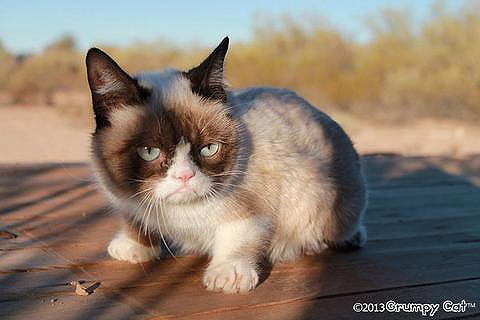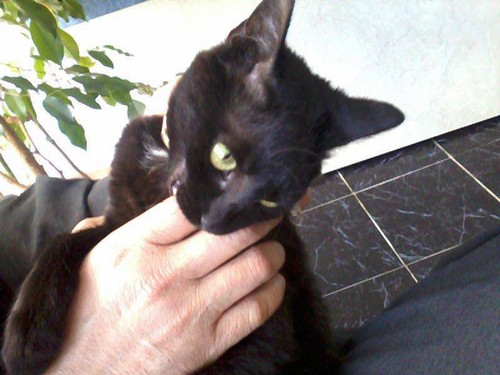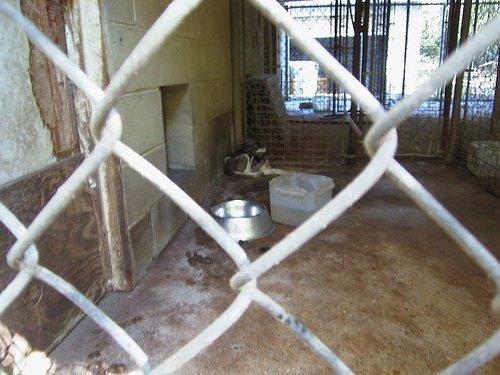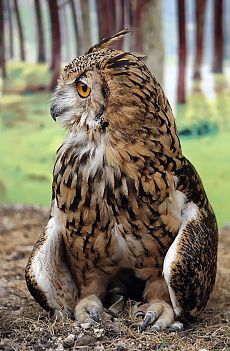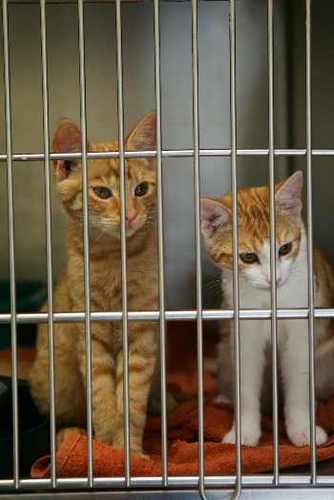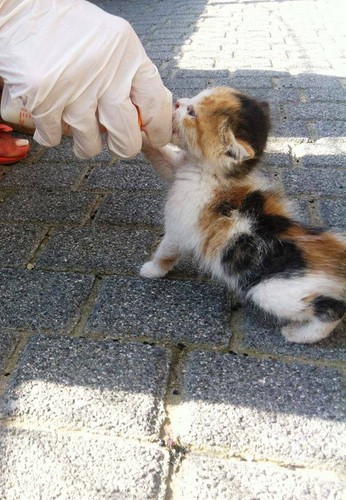THEY ARE IN DANGER FOR THESE REASONS
Threats
Since European settlement, approximately 80% of Australia's eucalypt forests have been decimated. Of the remaining 20% almost none is protected and most occurs on privately-owned land.
Settlers favoured the rich fertile lands along the eastern seaboard to have their farms and urban developments. Unfortunately, this is where the majority of koalas are already living because they also like to live in trees which are growing in fertile soils.
Koalas in danger!
Once people hunted koalas for their fur and by the 1920's the animals were almost extinct. Laws were passed to protect the koalas from hunters, but the koala is still a threatened species, depending on which state it lives in. People have destroyed koalas' habitat by cutting down eucalyptus forests. Koalas also die in bushfires and many koalas are hit by cars on country roads.
Now a disease called chlamydia (say clu-mid-ee-u), which makes koalas blind and makes the females unable to have babies, is harming these animals. Many koalas die because of the disease. Conservation organisations in Australia and around the world are working hard to help save the koalas.
The main causes of loss of habitat include:
LAND CLEARING
Clearing of the land for expansion of human settlement eg:-
agriculture, housing, mining, forestry,factories and roads.
The results of this would include:-
· loss of habitat
· increased disturbance by humans
· injury or death from traffic
· injury or death from dogs and cats
· effects of garden pesticides getting into waterways
· increased competition for food and territory because of overcrowding
· increased stress on animals, making them more susceptible to disease.
It has also been documented that over 4000 koalas are killed each year by dogs and cars. It easy to see that the biggest threat to the Koala population is the human.
BUSHFIRES
Koala populations in fragmented areas of bushland are at great risk of localised extinction from a single fire which may wipe out an entire habitat. Bushfires are extremely common in the Summer months.
DIEBACK
Changes in the balance of the ecosystem can lead to dieback of trees. The cutting back of the original vast forests has created patches of forest separated from each other by treeless land. Small, isolated patches of forest are prone to dieback. Dieback is a general term for the gradual dying of trees due to factors such as land degradation, leaching of soil nutrients, changes in the composition of vegetation communities, rising water levels underground, salination of the soil, erosion caused by wind and water, exposure to weather and excessive defoliation (or loss of leaves).
The underlying cause of all these factors appears to be the clearing and disturbance of forests. Seventy five percent of the main koala food tree species are declining in numbers as a result of this.
OTHER THREATS
Today the natural predators of the koala do not make a significant impact on wild populations.They include goannas dingoes, powerful owls, wedge-tailed eagles, and pythons, all of which are most likely to prey upon juvenile koalas.
Feral animals are another threat koalas have had to face since European settlement. Foxes have been blamed for preying upon young koalas when their mother descends to the ground to change trees, and large feral cats may also be a problem for young koalas.
Long droughts also have an effect on the Koala population
DISEASE
Disease is part of the natural history of the koala. There are 4 common koala diseases caused by the chlamydia organism: conjunctivitis which can cause blindness, pneumonia, urinary tract infections and reproductive tract infections, which can cause female infertility. The symptoms of chlamydia manifest as sore eyes, chest infections, and "wet bottom" or "dirty tail". Different strains of chlamydia bacteria are thought to cause these diseases. In 1995, scientists isolated two strains called chlamydia pecorum and chlamydia pneumoniae.
Scientists now believe that the chlamydia organism has been occuring amongst koala populations for many years, and has acted as a natural population control in times of stress. The organism is harmless in populations with unlimited resources, but manifests in times of stress, such as happens when habitat is reduced. The weaker animals succumb to the disease, become sick, infertile or die, leaving the genetically stronger animals to continue breeding. In disease-free populations which have been moved to areas where they were not native or where there is not enough habitat to support them (such as on some islands off Victoria and Kangaroo Island in South Australia), problems with overpopulation have arisen because of this unnatural situation. However, this is not the case in most mainland populations, and indeed many of the mainland colonies are in decline. Koalas also suffer from a range of cancers like leukemia and skin cancers.
HELP SAVE THEM TODAY BY NOT CHOPPING DOWN YOUR TREES JUST SO YOU CAN HAVE A VEIW..........WOULDN'T YOU RATHER SEE THE SIGHT OF BEAUTIFUL BABY/ADULT KOALAS??????
Threats
Since European settlement, approximately 80% of Australia's eucalypt forests have been decimated. Of the remaining 20% almost none is protected and most occurs on privately-owned land.
Settlers favoured the rich fertile lands along the eastern seaboard to have their farms and urban developments. Unfortunately, this is where the majority of koalas are already living because they also like to live in trees which are growing in fertile soils.
Koalas in danger!
Once people hunted koalas for their fur and by the 1920's the animals were almost extinct. Laws were passed to protect the koalas from hunters, but the koala is still a threatened species, depending on which state it lives in. People have destroyed koalas' habitat by cutting down eucalyptus forests. Koalas also die in bushfires and many koalas are hit by cars on country roads.
Now a disease called chlamydia (say clu-mid-ee-u), which makes koalas blind and makes the females unable to have babies, is harming these animals. Many koalas die because of the disease. Conservation organisations in Australia and around the world are working hard to help save the koalas.
The main causes of loss of habitat include:
LAND CLEARING
Clearing of the land for expansion of human settlement eg:-
agriculture, housing, mining, forestry,factories and roads.
The results of this would include:-
· loss of habitat
· increased disturbance by humans
· injury or death from traffic
· injury or death from dogs and cats
· effects of garden pesticides getting into waterways
· increased competition for food and territory because of overcrowding
· increased stress on animals, making them more susceptible to disease.
It has also been documented that over 4000 koalas are killed each year by dogs and cars. It easy to see that the biggest threat to the Koala population is the human.
BUSHFIRES
Koala populations in fragmented areas of bushland are at great risk of localised extinction from a single fire which may wipe out an entire habitat. Bushfires are extremely common in the Summer months.
DIEBACK
Changes in the balance of the ecosystem can lead to dieback of trees. The cutting back of the original vast forests has created patches of forest separated from each other by treeless land. Small, isolated patches of forest are prone to dieback. Dieback is a general term for the gradual dying of trees due to factors such as land degradation, leaching of soil nutrients, changes in the composition of vegetation communities, rising water levels underground, salination of the soil, erosion caused by wind and water, exposure to weather and excessive defoliation (or loss of leaves).
The underlying cause of all these factors appears to be the clearing and disturbance of forests. Seventy five percent of the main koala food tree species are declining in numbers as a result of this.
OTHER THREATS
Today the natural predators of the koala do not make a significant impact on wild populations.They include goannas dingoes, powerful owls, wedge-tailed eagles, and pythons, all of which are most likely to prey upon juvenile koalas.
Feral animals are another threat koalas have had to face since European settlement. Foxes have been blamed for preying upon young koalas when their mother descends to the ground to change trees, and large feral cats may also be a problem for young koalas.
Long droughts also have an effect on the Koala population
DISEASE
Disease is part of the natural history of the koala. There are 4 common koala diseases caused by the chlamydia organism: conjunctivitis which can cause blindness, pneumonia, urinary tract infections and reproductive tract infections, which can cause female infertility. The symptoms of chlamydia manifest as sore eyes, chest infections, and "wet bottom" or "dirty tail". Different strains of chlamydia bacteria are thought to cause these diseases. In 1995, scientists isolated two strains called chlamydia pecorum and chlamydia pneumoniae.
Scientists now believe that the chlamydia organism has been occuring amongst koala populations for many years, and has acted as a natural population control in times of stress. The organism is harmless in populations with unlimited resources, but manifests in times of stress, such as happens when habitat is reduced. The weaker animals succumb to the disease, become sick, infertile or die, leaving the genetically stronger animals to continue breeding. In disease-free populations which have been moved to areas where they were not native or where there is not enough habitat to support them (such as on some islands off Victoria and Kangaroo Island in South Australia), problems with overpopulation have arisen because of this unnatural situation. However, this is not the case in most mainland populations, and indeed many of the mainland colonies are in decline. Koalas also suffer from a range of cancers like leukemia and skin cancers.
HELP SAVE THEM TODAY BY NOT CHOPPING DOWN YOUR TREES JUST SO YOU CAN HAVE A VEIW..........WOULDN'T YOU RATHER SEE THE SIGHT OF BEAUTIFUL BABY/ADULT KOALAS??????




